montesa motorcycles began in 1944 when a young barcelona industrialist named pedro permanyer began to produce his own gas generators for automobiles. with the gas generator industry being a staple of individual spanish power supply from the spanish civil war in 1936 until after world war two in 1945, this activity opened opportunities in the motorcycle industry.
the spanish gas generator was a “green” procedure for obtaining fuel by burning almond shells and was at that time a seemingly magical resource for running cars, trucks and electrical generators. pedro had learned about the performance of vegetable combustion through a business founded by his grandfather.

almost impossible-to-find (messed up) image of a wood gas generator
shh! don’t tell the oil companies or they’ll… ****! too late.
after graduating with an engineering degree in 1931, pedro understood there would be a need for efficient engines as he saw the writing on the wall of civil war. he studied combustion systems using gas generators in internal combustion engines, traveling to madrid, london, and paris where their universities were working on these systems.
during the spanish civil war, pedro permanyer became manager of a repair and reconstruction workshop for air force vehicles where he was in charge of the workshop of soldiers who were mechanics, bench hands, millers, carpenters, body workers and assemblymen.
after the civil war he set up shop in barcelona where his gas generators were so successful he had to move operations to a much larger building. even with this success, with the end of the second world war in sight, permanyer realized that the supply of fuels would soon return to normal and he would have to reorganize his industry towards a different activity as gas generators – an emergency resource needed due to prevailing economic and political circumstances – would become obsolete.
his first idea was to study the two-stroke engine for motorcycles. after a decade of war there was an immediate and extraordinary demand for this type of motor in light vehicles while there was an almost nonexistent production of these motors both domestically and abroad. cha-ching!
pedro partnered with an old wartime associate and francisco bultó, who went on to found bultaco motorcycles. in june of 1944 they began manufacturing two stroke motorcycles at pedro’s barcelona factory.
their first prototype was ready and on february 11, 1945 the bike was registered for motorcycle performance testing organised by the royal motorcycle club of catalonia under the initials “xx,” since the name of the make was still undecided. the rider was josé luis milá and he was unable to finish the trials due to a breakdown of the starter.

soft construction with boiled beans (premonition of civil war) | salvadore dali
the setback did not discourage the company and in fact it spurred them on to perfect the technical development of their design. still, there were great difficulties in sustaining assembly-line production as spain was politically isolated and there were no auxiliary industries to assist in any way. this made it extremely difficult to obtain the necessary raw materials and parts.
one of the most important elements was incredibly difficult to find; a magnetic flywheel needed for the starter. luckily, prior to ww2, a movie projector factory had imported bosch flywheels in order to manufacture motorcycles. permanyer and bultó bought 100 units from him.
in order to obtain the materials they needed, pedro permanyer had to stretch his imagination to hardly believable limits as there were no means of production nor specialists available for his venture. he made continuous forays to gather information throughout europe and had to make wily maneuvers such as exporting spanish wines in order to obtain the import license he needed for his industry. meanwhile, bultó was designing prototypes as another friend and engineer, carles flywheels (real name), collaborated on their first drawings. soon they began building their first one hundred bikes.
in june of 1945 it was decided that the trademark would be called montesa, and three of the new motorcycles were shown at the barcelona trade fair. the first was the A-4 model; a rigid frame motorcycle with a 98cc engine (45.6mm x 60mm) with a three speed gearbox. a lady’s model was also shown, as well as one with rear suspension. the carburators used were french gurtner’s, although the company would manufacture its own shortly afterward.
the motorcycles raced up a roadless mountain where until that day nothing but people and mules dared travel. five of their motorbikes reached the top where i suppose they thought, “s**t. now we have to get back down and who brought the water?” later that year, 1945, the company participated in a circuit speed race, the montjuic motorcycle race, where the home-grown montesa performed brilliantly and won four first prizes in the 100cc classes to the enthusiastic applause of the public.
assembly line production had already begun and on june, 19, 1945 the first unit appeared on the market with the serial number mb-0001 and the buyer was pedro permanyer himself. montesa motorcycles manufactured 21 motorbikes that year.
according to francisco herreros, author of the spanish motorcycle encyclopedia, only a madrid-born owner of a motorcycle company with political loyalty to the regime of spanish ruler general franco had a proper factory and government support for their endeavors. however, the quality of their machines left much to be desired.

1974 montesa 247 engine | raawr
montesa had the edge as it was the first motorcycle manufacturer in spain, with assembly line production and a truly industrial and export-minded spirit. the following year of 1946 saw montesa motorbikes win in 125 and 100cc international races. some units were also equipped with english villiers engines, although the idea of importing these engines for use in the series was finally rejected. instead, in 1947, the b-46/49 model was introduced with new cylinders and heads and a larger, square-looking exterior.
shortly thereafter, pedro’s partner senor bulto decided to reduce his partnership even though there was a need to expand operations, citing the continuing troubles obtaining necessary elements for these motorcycles. to move forward pedro permanyer pledged his personal capital, obtained 23 other shareholders, and as orders continued to grow faster than production could meet, a move to a third facility was planned.
in 1953 the montesa brío 90 was built. the brío 90 was a finely-tuned sport model and for the first time had the carburator located behind the cylinder, as well as other modifications to the engine which gave it greater power and acceleration. the new montesa had smaller wheels, wider mudguards and meatier tires. the bike gave a smooth ride and was easier to use as a two-seater, which was an attractive option at the time. that year montesa motorcycles appeared in the geneva motor show, the first trade show they had participated in outside of spain. they also built the brío 80, a more utilitarian model of the brío 90, a year later.
montesa continued racing worldwide for years, from the gran prix held in sao paulo to the the isle of man, with great success. once again at the montjuic 24-hour race, monesa finished ahead of moto guzzi, bmw, triumph, and others, all which possessed larger engines. with the introduction of new motorcycles for work and racing, the montesa was known worldwide as “motorcycles that drive as good as they look.”
in 1958 the spanish government decided to implement the “national stabilization plan,” in order to reduce inflation and eliminate the public deficit. the plan was extremely restrictive and the cutbacks led to a restructuring of many prosperous companies in spain, including montesa. under these circumstances, pedro proposed limiting costs, which included the racing department which. bultó refused to accept this restriction and decided to leave the company, stating that the competitions were his main motivation for his involvement in montesa. he took many racing department members with him which devastated permanyer. still fighting for his business, pedro permanyer replaced the board of directors and hired a new man to head his technical department and in 1959 montesa exported their first motorbikes to japan.

pere pi, first trial spanish championship winner, with montesa cota 247
1959 was also when montesa introduced a model deemed the triumph of the design team’s creativity, called the d-51. the bike was a change in look for montesa and had a round tank with a red paint job, which would become symbolic of the brand.
with new income from a difficult country to export into, the race department of montesa was renewed and in march of 1959 the first race between montesa and francisco bultó’s new company, bultaco, took place in the 125cc class of the 15th montjuic gran prix. a passionate duel was fought where the montesa pilot won by inches. more sport wins piled up for montesa over the years, including their entries into motocross racing.
in 1963 montessa left their third factory and opened a new factory and headquarters they had built and which measured 33,000 square feet (10,000 square meters). during it’s construction, pedro and a few of his racing experts decided that crossing africa by motorcycle, from capetown to cairo, would be “an adventure of epic proportions.” “operation impala” was certainly that and media outlets covered the event closely. three prototype motorcycles, named impalas, were prepared and backed up by a land rover. the adventure took almost three years and crossed 12,500 miles (20,000 kilometers). mechanical problems were minor through the forests and plains of inhospitable countries. the biggest issue was the lack of roads that had montesa riders often risking life and limb.
since that trek, the 175cc montesa impala has become legendary in spain, where the 40 year-old motorbikes are still ridden.
during the 1960’s montesa grew rapidly. besides releasing the impala, they manufactured the impala sport, the comando, and the impala cross, which was a motocross model made in 175 and 250cc sizes. another new model was also launched; the four speed 60cc scooter called the microsooter.
racing victories continued to pile up for the montesa racing squad on the road and in the dirt.
in 1963, american kim kimball began importing of the impala 175 cross, which was called the “scrambler” in the states. kimball initially used his own garage and then expanded to a retail network of 350 dealerships throughout the usa. he began to participate in desert trials and made the trademark known nationwide. kim’s friend, dan gurney, the famous race car driver, joined montesa motors as several montesa models were seen in numerous hollywood movies, such as “big jake”, “freebie and the bean”, and “on any sunday”, starring steve mcqueen.
sometimes the bikes were changed up to appear as vintage harley-davidsons. for shame. even so, mcqueen owned montesa motorbikes and spent many days riding them in the california deserts.
in 1969, pedro permanyer, always in awe of technical advancement, arranged a gift for astronaut neil armstrong to commemorate his successful moon voyage. a new montesa motorcycle was set at his front door where neil found it upon his return.
the popularity of motocross gave montesa the opportunity to launch new models, and the impala cross was replaced in 1967 by the cross ’66 and the cappra 250 for the growing american market.
in the late 1960’s racing competition became more difficult with the introduction of japanese motorcycles which had bulldozed their way to the top. mike hailwood’s unbeatable six cylinder honda 250 ruled the races. nevertheless, montesa began construction of a new 125cc rotary valve engine for international competition. the five speed 250cc bike had a central exhaust pipe and was again the victor of the montjuic 24-hour motorcycle rally.
1968 saw the beginning of the production of the cappra 250 and the 360 gp with designs that were clearly a departure from the impala style. the success of these machines culminated in 1969 when montesa won the national championships of belgium, france, italy, switzerland, and the usa in the 250 and 500cc categories.
trial events became increasingly popular in the 1960’s along with motocross, and in 1968 montesa created the cota 247. its innovative design possessed an integrated fuel tank and seat, and the motorcycle was awarded the delta de plata industrial adi-fad design prize. british racer don smith was hired and won the european championships after defeating the legendary sammy miller and his sherpa. this triumph made montesa a legend themselves.
at the end of 1968, in spite of winning the italian 250cc speed championship, montesa decided to redirect its products toward motocross design, which was on the rise at the time, and the company abandoned speed competitions. to please younger fans, montesa launched the cota 25, a small reproduction of the cota 247. the “children’s trial” became a popular hit, with specially designed races for kids to participate in.
the 1970’s were a brilliant decade in montesa’s evolution thanks to the success of their extensive trial range and the competitive motocross cappras. even so, japanese manufacturers were producing road bikes that were highly competitive price-wise, and these brands continued to improve in quality and features, gaining the trust of markets worldwide. as a result, the british motorcycle industry, which had been the world’s top road bike exporter, sank into a crisis from which it would not survive. every british road bike manufacturer went out of business. royal-enfield stopped building bikes in 1970 and as of today the brand is only made in india and rarely exported. it was not until 1990, with the re-emergence of triumph, that great britain again manufactured motorcycles.
montesa continued to manufacture and race in motocross events worldwide and in 1979 a montesa enduro was victorious in the spanish championships.
always anticipating trends, this time the end of the popular “off road” motorcycle fad, pedro and montesa introduced a new touring model in 1978 called the crono, with 75 and 125cc engines. the crono 350 hit the market in 1981 as a touring bike with a classic design. in 1982 the company decided to produce the impala 2, a new version of the original impala which had been discontinued in 1972. the new impala 2 had alloy wheels and electronic ignition.
that same year bultaco and ossa, traditional competitors of montesa, decided to close their factories. other smaller spanish motorcycle companies had already closed as well. montesa had, as usual, anticipated this situation and made a tremendous effort to acquire, outside of spain, modern the most advanced technology and machinery to improve its products. regardless, new technology was met with a drop in sales and as a result staff was cut and the survival of the company was in doubt. there were strikes that shut down production for three months at one point.
the financial situation became critical and investments in new models were frozen. the company suspended payments to creditors in september, 1983. still, montesa had a very solid commercial and industrial organization and it managed to avoid closing it’s factory doors by agreeing with honda in to form montesa honda s.a.
honda committed itself to marketing new models of the popular cota 125, 200 and 349, manufactured under the montesa honda marque. they would no longer be imported to the untited states or japan and the lineup of motocross bikes were sold through montesa’s sales network in europe only.
pedro permanyer died on march 20, 1987 at the age of 75. honda continued producing and racing these bikes under the montesa honda name through the 1980’s. in 1985, a major reorganization took place. by then, only two trial models were offered and the montesa honda workforce had shrunk to 152 employees. in 1986 there were further financial moves between honda, spain’s government, and the permanyer family, leading to honda buying the majority of the family’s remaining shares. honda then owned 85% of the company shares and spent $5 million modifying and updating the 23 year-old barcelona factory.
in 1992, the water-cooled cota 311 was produced. this would be the last “real” montesa. two years later the 314r was introduced. this motorbike featured an honda racing company powerplant instead of a montesa motor and had many other honda components. the 315r was manufactured until 2004 and won many world championships. the bike was replaced by the technically advanced four-stroke cota 4rt in 2005 and is still made today.
recently, a queer design company took an old montesa cota 247, gave it a slick re-furb and covered the body in the leather used by their client for helmets and gloves, proving that the montesa marque is worthy of art as well as mud and asphalt.

Get the best of bikerMetric directly in your inbox, once a week, every week.
[wysija_form id="1"]
 bikerMetric custom metric bobbers, choppers, and cafe racers by honda, yamaha, kawaski, and suzuki
bikerMetric custom metric bobbers, choppers, and cafe racers by honda, yamaha, kawaski, and suzuki
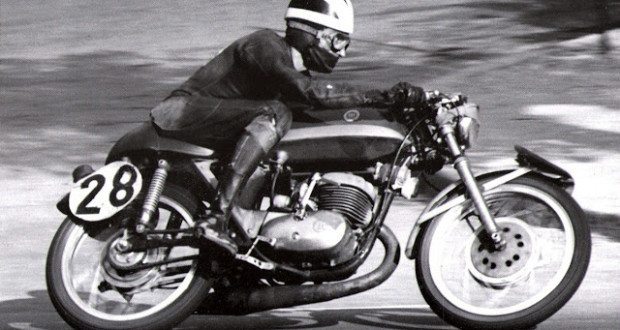
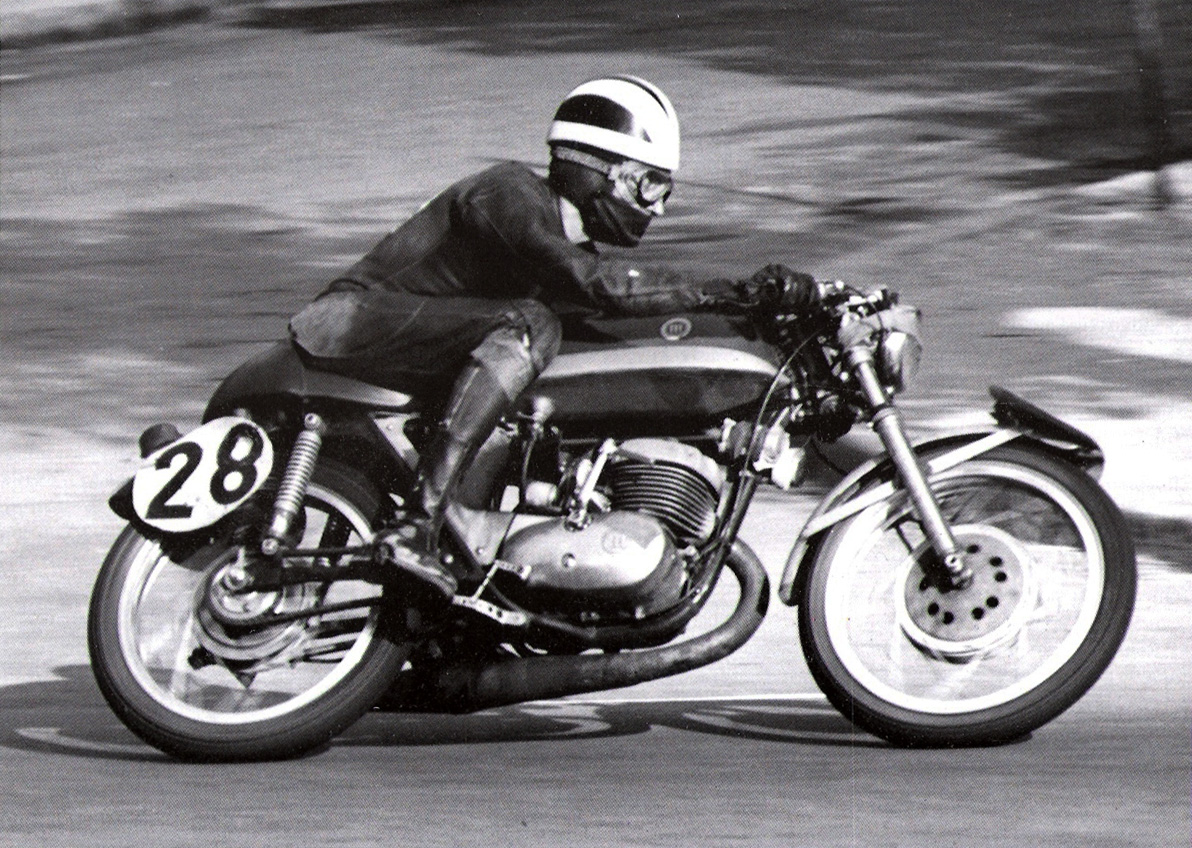








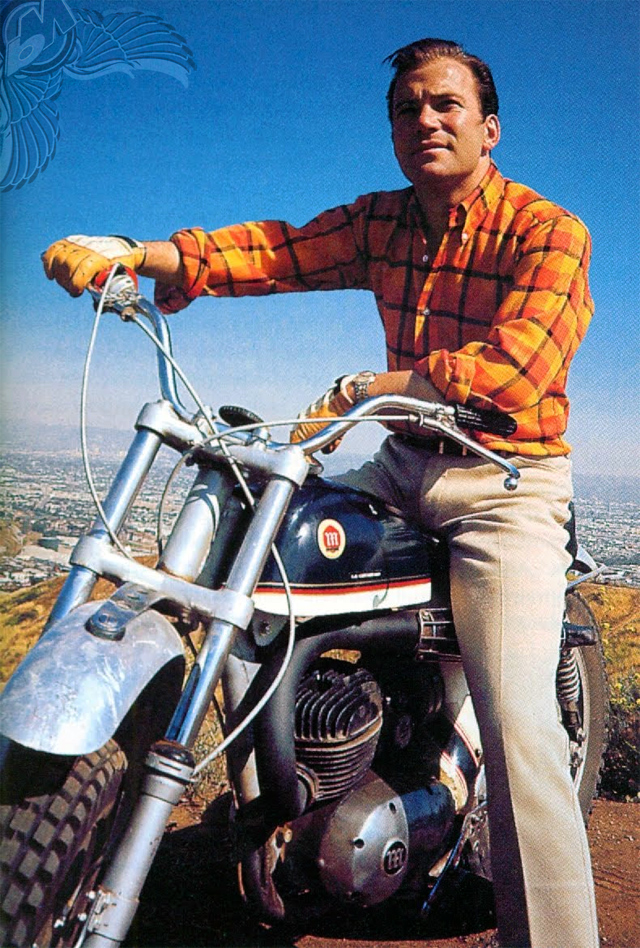










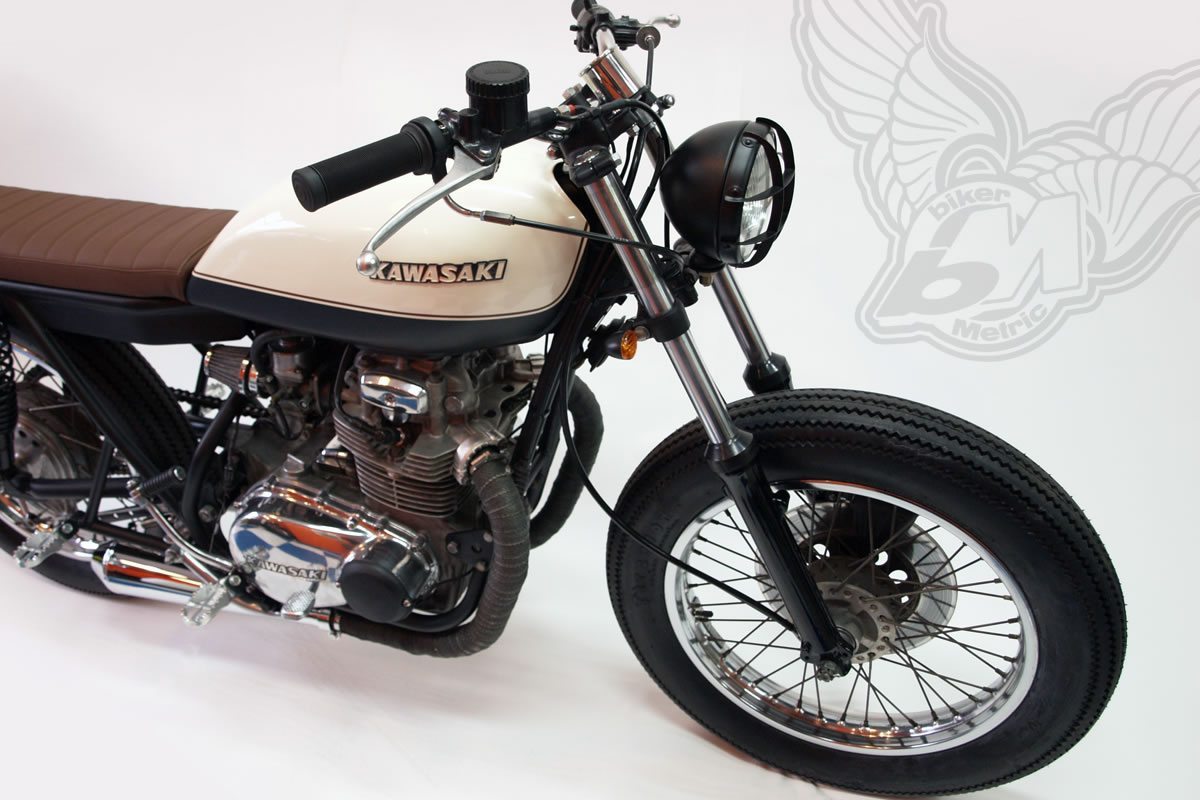
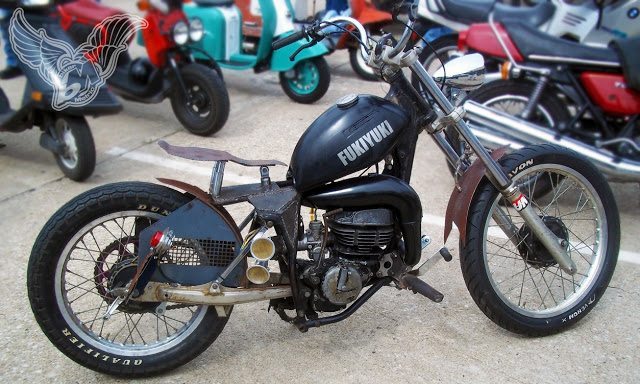
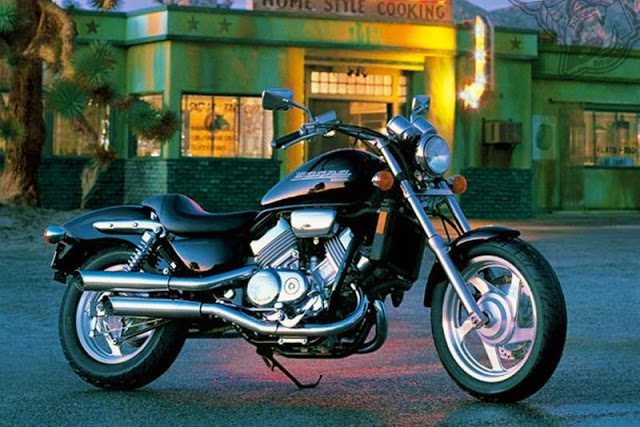
Very informative story. I remember seeing somewhere a story about a wood burning gas generator being available in the US after WWII. It was designed to be used on tractors. There was a picture of one mounted on a Ford 8N tractor.
TOOLS
Very Good Article !!!…congratulations from a Montesa Fan in Spain…I put your blog into my favorites and I do invite you to visit my blog dedicate to Montesa:
http://montesadna.blogspot.com
Best regards,
Jaume Domínguez
Barcelona (Spain)
By the way…just one comment: the man in the picture with the Cota 247 is not Pere Permanyer…He is Pere Pi, the first Trial Spanish championship winner. He was one of the Cota 247 developpers and designer of the Montesa bycicles for Trialsin. The bycicles were called “Montesitas” and there were some popular models: T5, T10, C10 Crosssin, T12, & T15.
Mr. Pere Pi created also the MONTY brand.
regards,
Jaume
thanks jaume! your site looks great.
thanks
i am currently working on getting a 1972, montesa, king scorpion 250,running & back to a friend.just got it successfully fired off, i need a kick return spring,a carberator, i have been looking 0n e bay, no success,carb is flanged,the bings are flangeless,please help..
need a flanged carberator,kick return spring
I bought my 70 360 Capra in 1974 I still remember just how well behaved it was at speed . “When I’m doubt gas it” would usually save the day, riding double with my brothers girlfriend behind me , it would leave my buddy w/ brother on tm400 behind on fire roads . Very controllable slides (more gas hang out less would comeback nicely, would build confidence. Only drawback was mother f-:;er to start ( bruise foot from kickback starter arm come down on foot peg. Btw I still have it as just never wanted to get rid of it